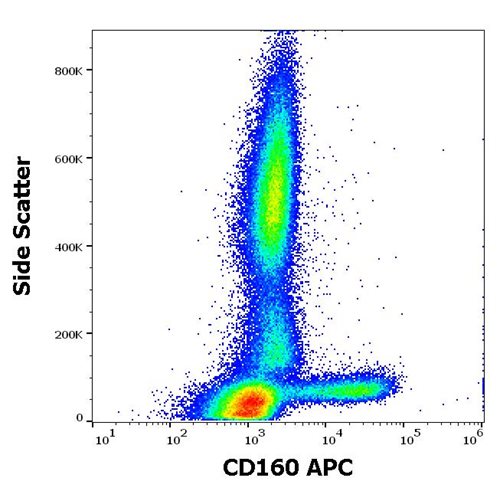Anti-FOXP3 Polyclonal Antibody
Shipping Info:
For estimated delivery dates, please contact us at [email protected]
| Format : | Lyophilized |
| Amount : | 100 μg/vial |
| Isotype : | Rabbit IgG |
| Purification : | Immunogen affinity purified. |
| Content : | Each vial contains 5mg BSA, 0.9mg NaCl, 0.2mg Na2HPO4, 0.05mg NaN3. Reconstitute : Add 0.2ml of distilled water will yield a concentration of 500ug/ml. |
| Storage condition : | At -20˚C for one year. After reconstitution, at 4˚C for one month. It can also be aliquotted and stored frozen at -20˚C for a longer time. Avoid repeated freezing and thawing. |
| Gene : | FOXP3 |
| Gene ID : | 50943 |
| Uniprot ID : | Q9BZS1 |
| Alternative Name : | Forkhead box protein P3; Scurfin; Forkhead box protein P3, C-terminally processed; Forkhead box protein P3 41 kDa form; FOXP3; IPEX; JM2 |
| Immunogen Information : | E.coli-derived Human FOXP3 recombinant protein (Position: H101-P431). Human FOXP3 shares 88% amino acid (aa) sequence identity with Mouse FOXP3. |
FOXP3(forkhead box P3) is a protein involved in immune system responses. The human FOXP3 genes contain 11 coding exons. Exon-intron boundaries are identical across the coding regions of the mouse and human genes. By genomic sequence analysis, the FOXP3 gene maps to the p arm of the X chromosome(specifically, Xp11.23). A member of the FOX protein family, FOXP3 appears to function as a master regulator in the development and function of regulatory T cells. While the precise control mechanism has not yet been established, FOX proteins belong to the forkhead/winged-helix family of transcriptional regulators and are presumed to exert control via similar DNA binding interactions during transcription.
Immunohistochemistry(Paraffin-embedded Section) : 0.5-1μg/ml
For Research Use Only. Not for use in diagnostic/therapeutics procedures.
| Subcellular location: | Nucleus, Cytoplasm |
| Post transnational modification: | Undergoes proteolytic cleavage in activated regulatory T-cells (Treg), and can be cleaved at either the N- or C-terminal site, or at both sites. |
| BioGrid: | 119170. 70 interactions. |
|
There are currently no product reviews
|






















.png)









